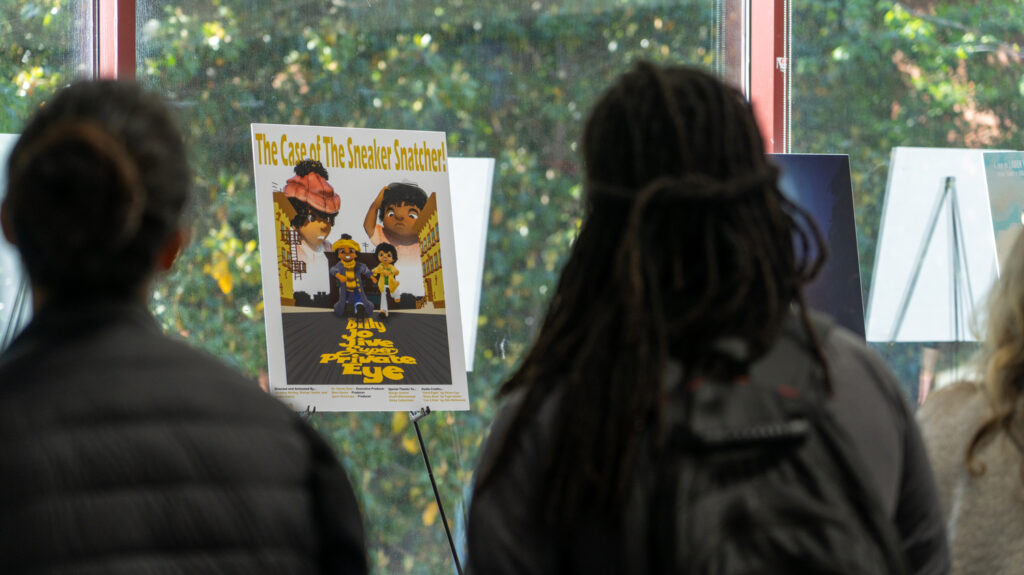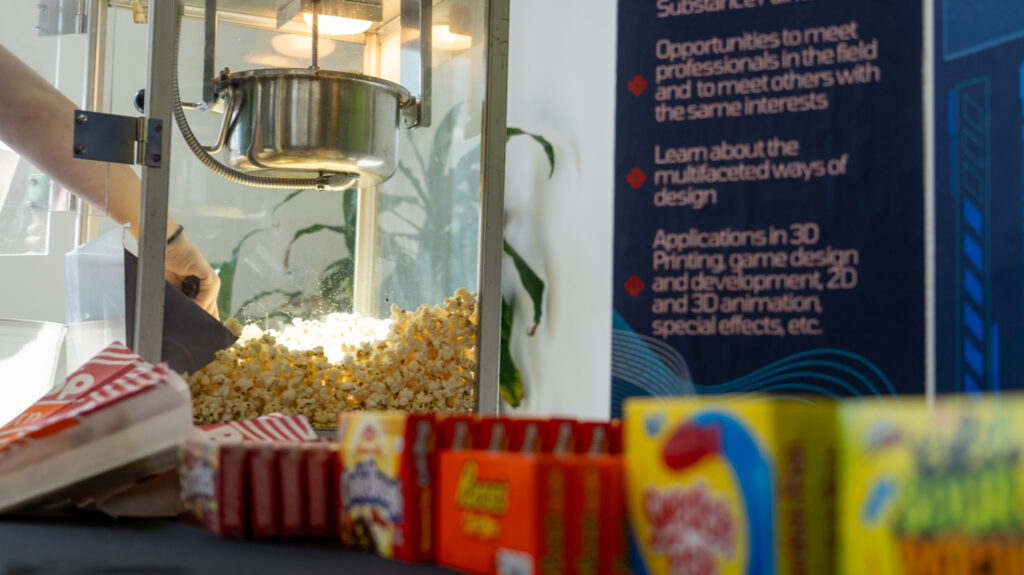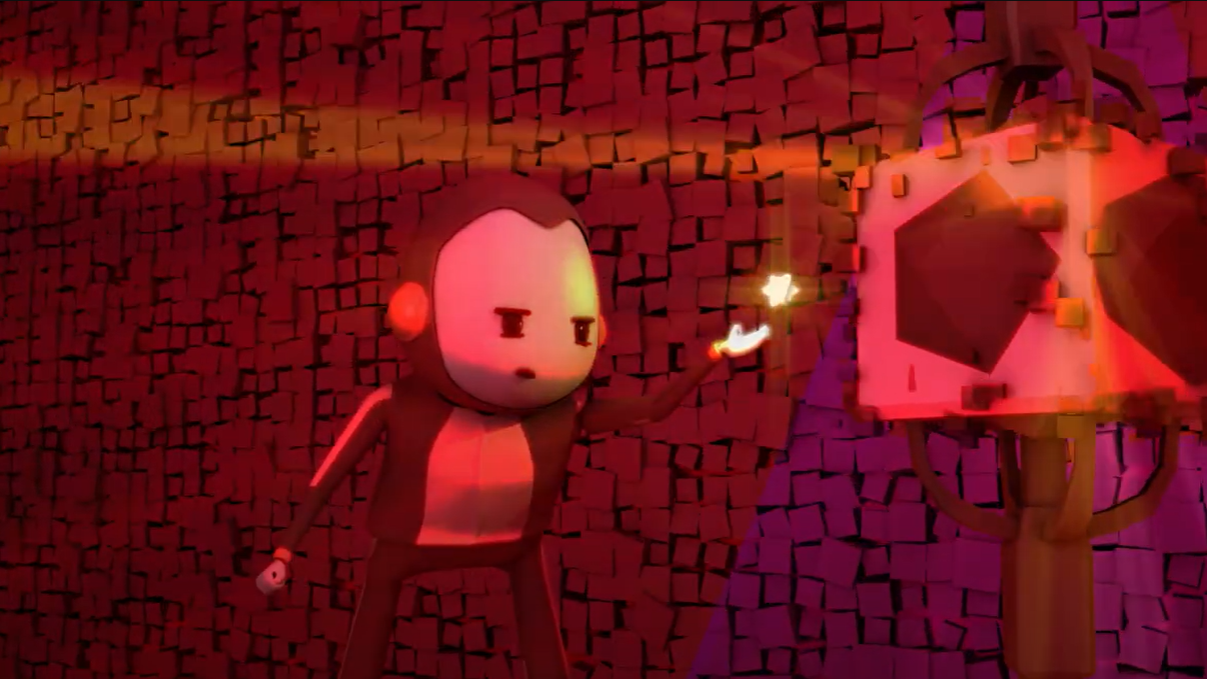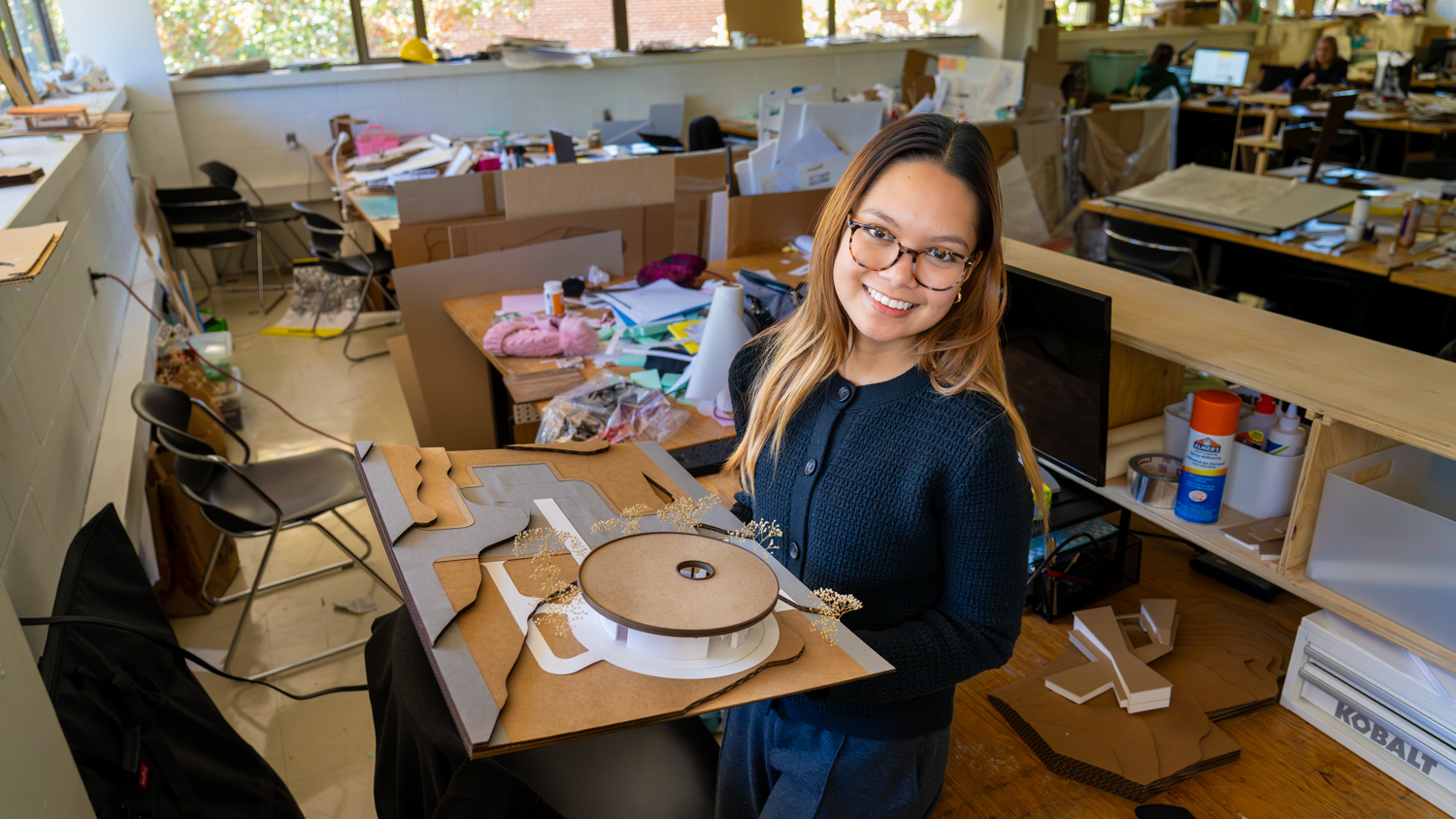“A remix of Pink Floyd, 2001 Space Odyssey and Akira” – Faculty member enters Pink Floyd animation competition
Marc Russo can distinctly remember one of his first introductions to Pink Floyd. He was sitting on the front steps of his friend’s house in 1980, listening to “The Wall”. “My 10 year old self heard “Another Brick in the Wall” as a battle cry,” he says. “I didn’t understand the album, but I was connected to this song.”
When the band released “Momentary Lapse of Reason” in 1989, Russo was 10 years older, and mature enough to understand his connection to the music. The music of Pink Floyd became a soundtrack to his freshman year in college and fueled his dreams of playing bass guitar and being in a heavy metal band.
44 years after that first encounter, Russo, alumnus and associate professor of media arts, design and technology, is connecting his love of Pink Floyd with his professional work in a different way – designing an animation as an entry for a contest hosted by the band to celebrate the 50th anniversary of their release of “Dark Side of the Moon.”
The contest rules were simple: create an animated music video for any of the ten songs from the iconic 1973 album. Russo chose to animate “On the Run.” Given his history with the music, “On the Run” didn’t have as strong a connection for him, and presented him with more of a blank slate. “I wanted to do something new, not something coming from a past me. It doesn’t have vocals, so it doesn’t speak to a strong idea, and I felt I could bring new ideas to this more easily and warp it in the direction I wanted it to go,” he says.
This work was a passion project, fitting into nights and weekends over 10 months. The work is a good example to his students on a variety of core concepts – managing efficiencies, maintaining motivation and making the best creative decisions you can. “That’s the thing I want to communicate to my students – they are talented enough, they can manage the production of large-scale projects on their own. I can give them feedback on the story, on the visuals, but let’s also talk about what’s keeping them from getting to that next step, and what tricks can you play on yourself to keep going.”
Through the background of the song, we hear noises of airplanes taking off. “According to the artists who wrote it, the song is about a fear of flying – every song on the album is about a fear of something.” Russo felt strongly that the song was about being on the run from your fear, but feeling like eventually you have to confront that fear head on.
He brought a science fiction approach to the story, “a remix of Pink Floyd, 2001 Space Odyssey and Akira” to center his character in a mix of space stations, on the run in a futuristic world.
Storytelling is something that is a fundamental aspect of the studio courses Russo teaches, which center around animation and storytelling. Student work is celebrated at the end of the year during Animation Fest, where students, faculty and the public gather to watch the fruits of the students’ labor on the big screen. This year’s fest had popcorn and boxed candy, and the films were screened in the cinema space in Witherspoon.



Students in the senior capstone course Russo teaches have an entire academic year to work continuously and independently on a single project, often a short film. There are a number of benefits from this process, Russo feels, making the students better team members, honing a diverse skill set.
While students come into the program with those storytelling skills and desire to visually create, there’s a lot more to it than meets the eye. “They know they want to learn the production process, but what they don’t know is that there are a lot of storytelling skills that they need to learn and practice also, so they can craft a story in the way that they want to instead of just traveling intuitively through it,” Russo adds.
The competition, interestingly, included AI-generated submissions as valid entries, and Russo embraced this technology, using it to automate background tasks that were redundant, so he could focus on the work that expressed his individual style and voice. He sees hope in the future of AI in animation, as it has the ability to help graduates develop careers as independent animators.
“It’s bringing the idea of becoming an independent animator to the forefront, because the collection of tools helps people produce on their own, accomplishing the work of a small team as individuals,” he explains.
“I’ve said to my students – we’re storytellers. And AI can never truly be a storyteller, because it’s never lived a life. It’s far more interesting for my students to produce something in their style, rather than another one.”
“I’ve said to my students – we’re storytellers. And AI can never truly be a storyteller, because it’s never lived a life. It’s far more interesting for my students to produce something in their style, rather than another one.”
Entering the competition was important for Russo to not only test his storytelling skills as an animator with music that he had a personal connection to, but also to generate excitement about his work in front of a larger audience. A member of the contest team reached out to use his animation as part of the promo for the competition.
“Even though I didn’t win, there was still that warm moment where someone in this big media production house was impressed enough with my work to share it. And so that’s pretty cool,” he says.



